Reading the text on the project’s website and in the mobile app. Subscribing to the mailing list and voting in a couple of polls. Following the project in social networks.

Defining the problems: the text feels very heavyweight and is written in an overly official language which makes it difficult to read. Often, the text is not adapted for the communication channel, which makes people abandon reading it half-way through.
Discussing ways to improve the style, appearance and presentation with the art director. Putting together all thoughts and examples in a single document.
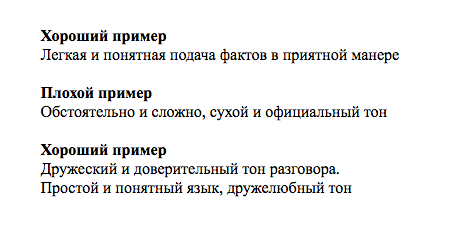
Searching for presentation ideas.
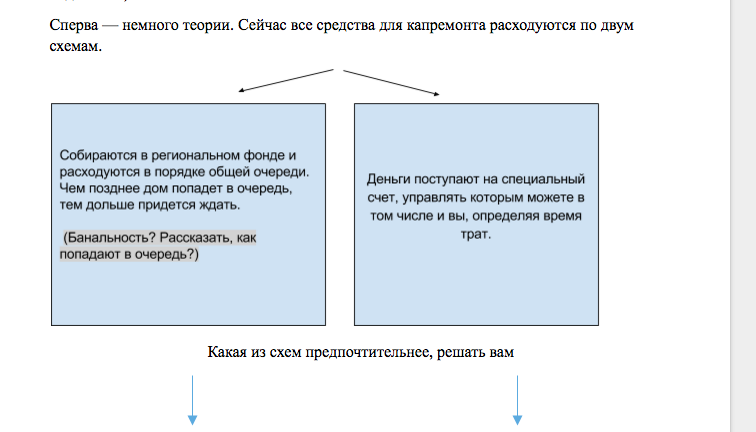
Art director: It lacks a clear structure. Right now all I see are some incoherent blocks that I’m not sure how to use. Our task is to make this work for a copywriter on his or her first day on the job.
Changing and rearranging paragraphs, adding tie-ins and real-life examples, setting up a structure.
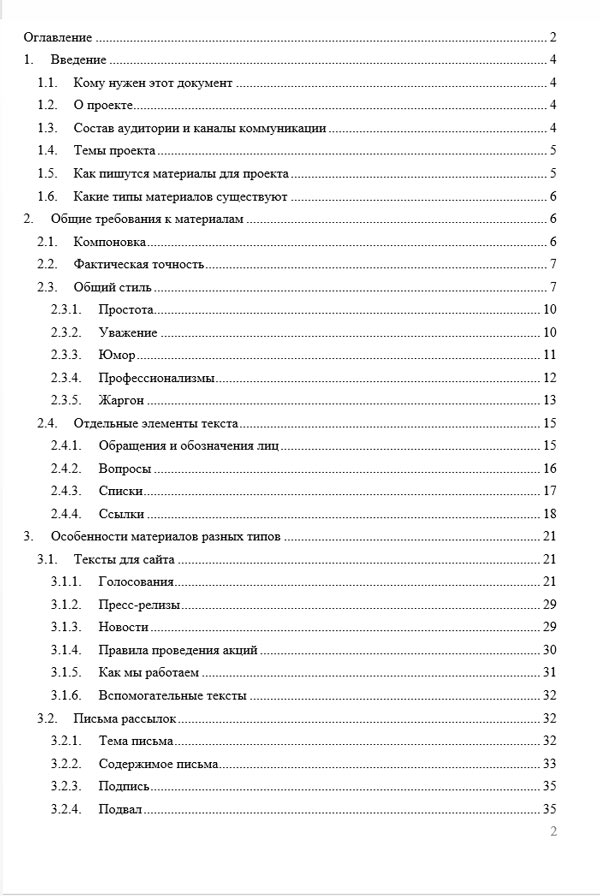
The art director likes the result much better.
Asking a designer to help describe the visual language. Sending the draft version to the editor in chief, following up with a bunch of questions, making changes, rewriting certain paragraphs, getting the final approval and showing to the client.
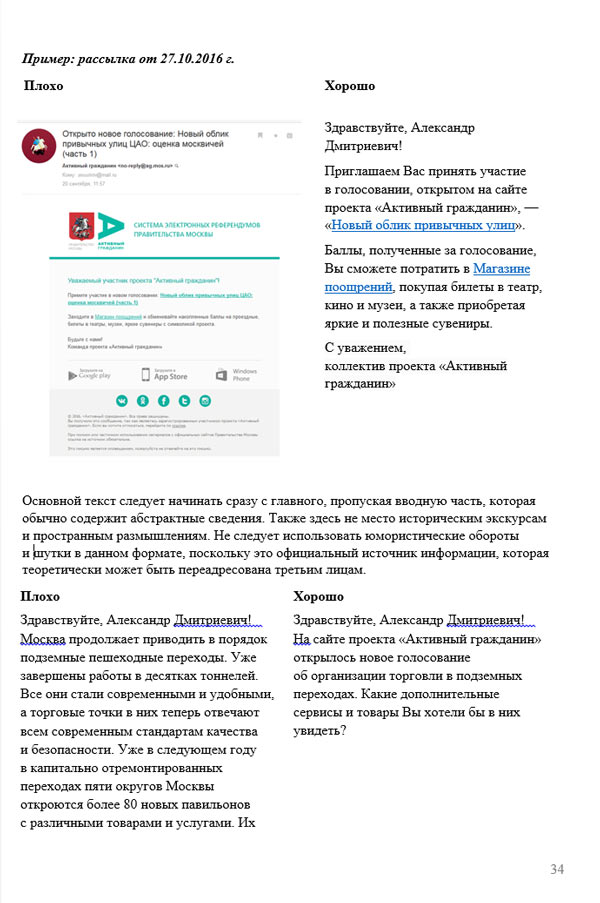
Finding out that the client was hoping to get a description of different styles, each for its own category of readers. Trying to convince the client that the text needs to be interesting and understandable by everyone.
At the end, agreeing to keep the differentiation by communication channels rather than by ages or backgrounds. Putting together another version with explanations.
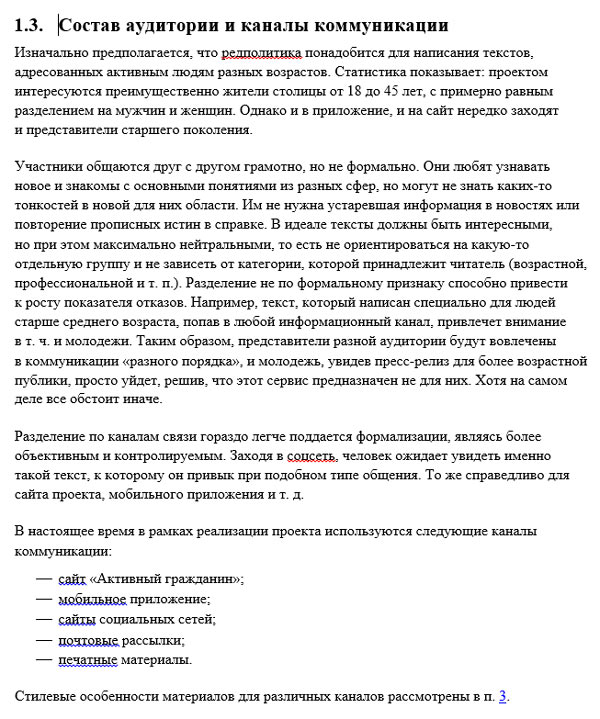
The client asks to add more examples by finding errors illustrating each rule in the project’s old texts. Trying to counter with arguments such as “right now some of the examples are missing on the website, but if someone would ever want to do that, we’ll let them know they can’t,” but the client is having none of it.
Going over the archive again and inserting links to illustrate all rules, finding the missing examples on similar websites. Discovering a couple of texts that are actually pretty good.
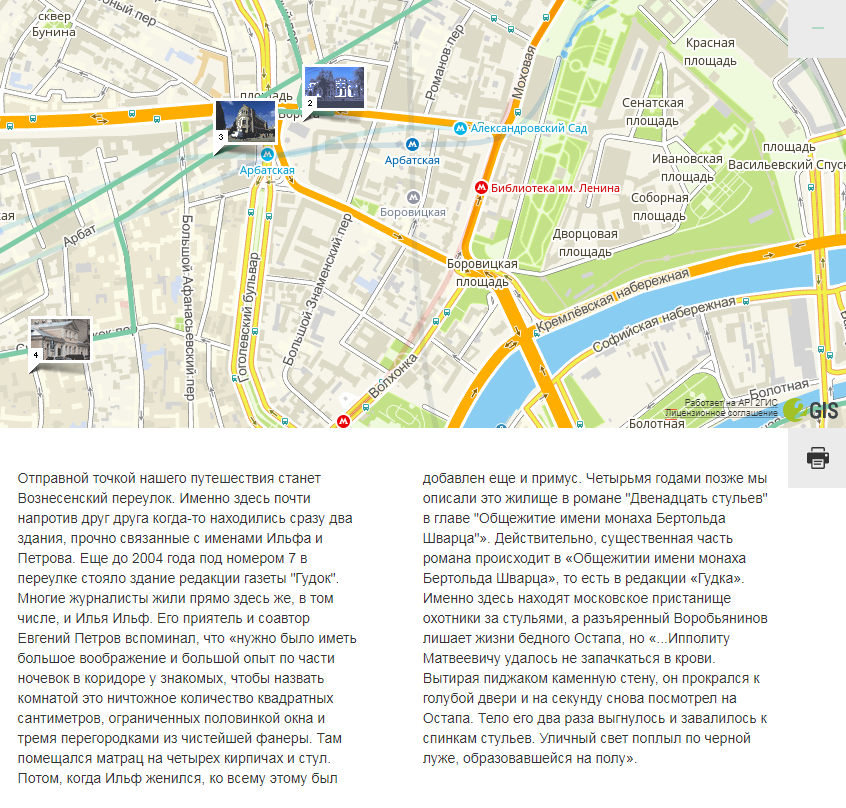
Receiving the requirement not to take text fragments with issues out of context and provide entire paragraphs, even if the error is in an incorrect reference. The document rapidly grows in size. Sending a new version to the client.

Going over the texts from the client that need to be changed according to the new standards. Deciding to present them in an addendum as Before and After. Rewriting each example and supplementing it with explanations on what was changed and why.
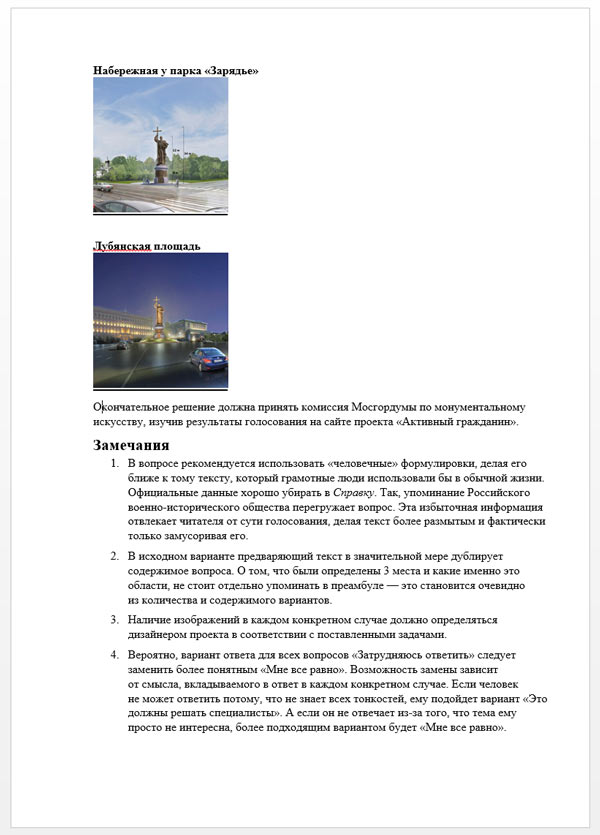
By the request of the client, describing special internal rules for specific areas and information channels. Making sure we include examples, too.
Separately going over the limitations imposed by the technical aspect of the project. Adding recommendations for developers. Inserting the most important grammar rules into the document.
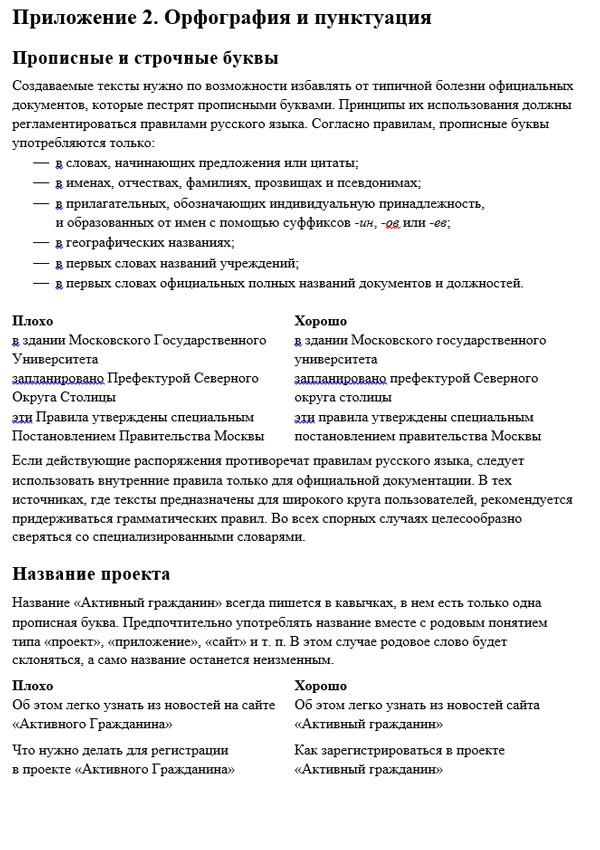
After the final improvements, the client approves the results and starts to implement the principles on the project’s website, in letters and messages.
Meanwhile, we typeset the final document with appendices as a large and beautiful guide.
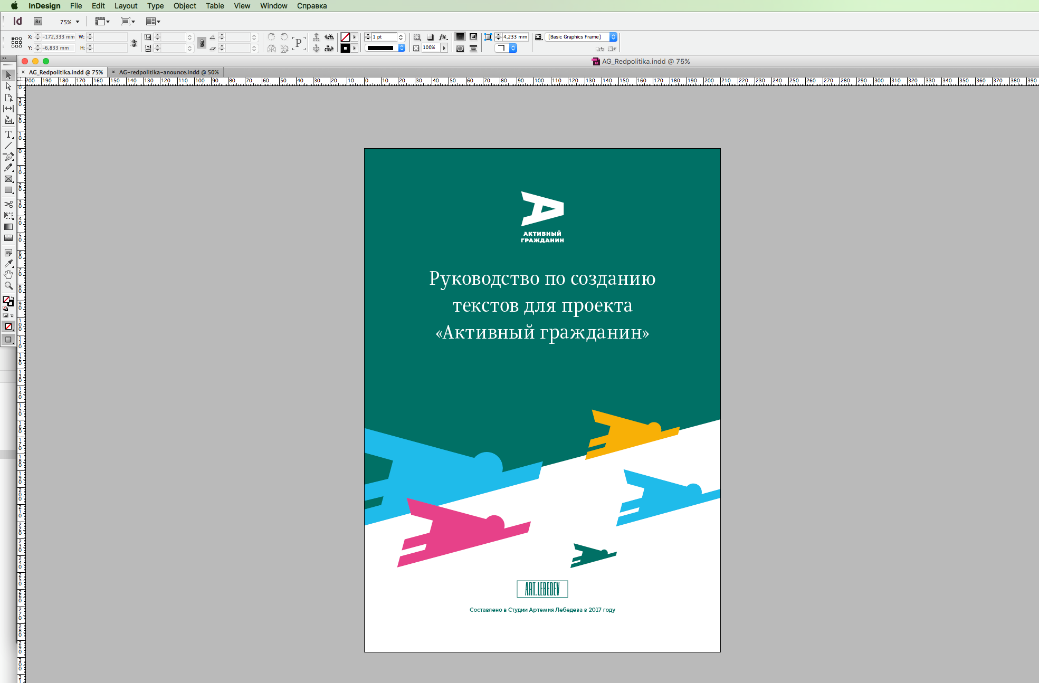
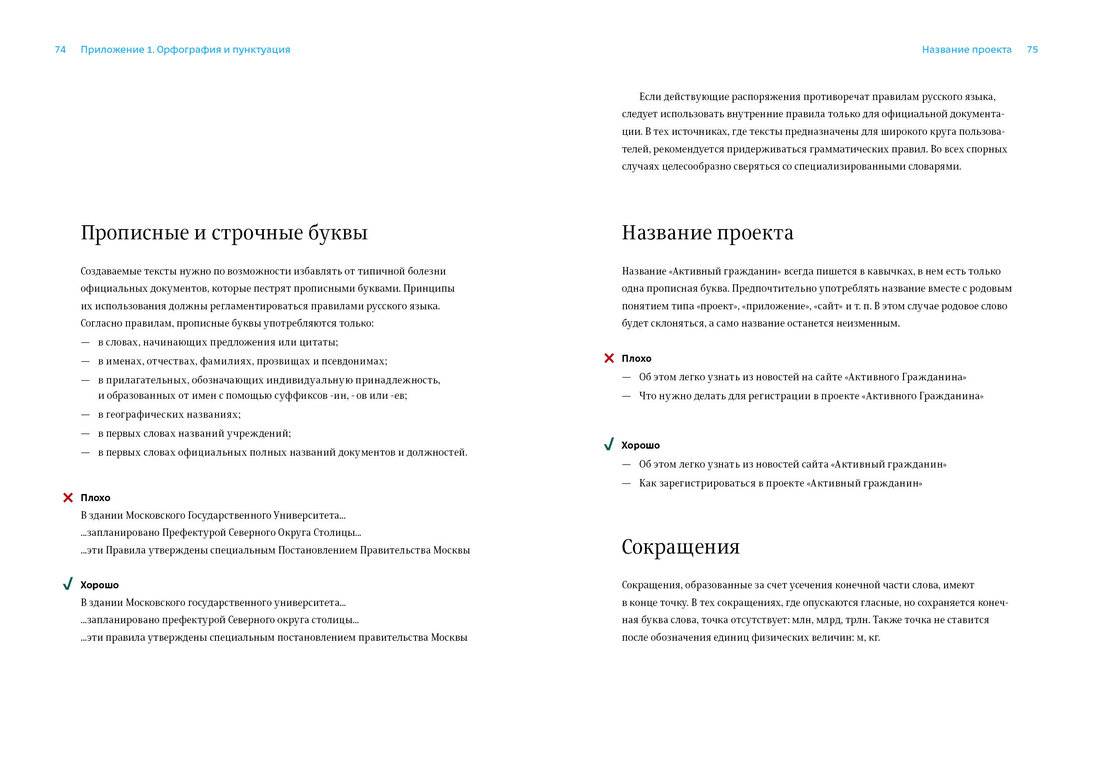
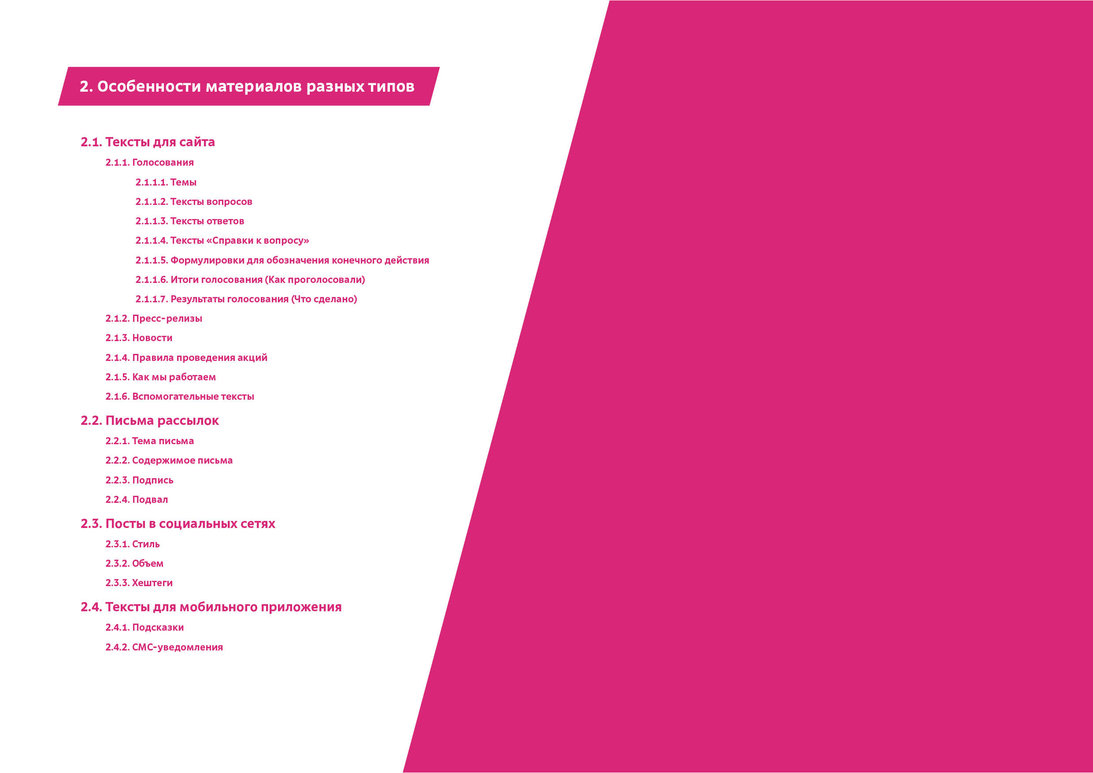
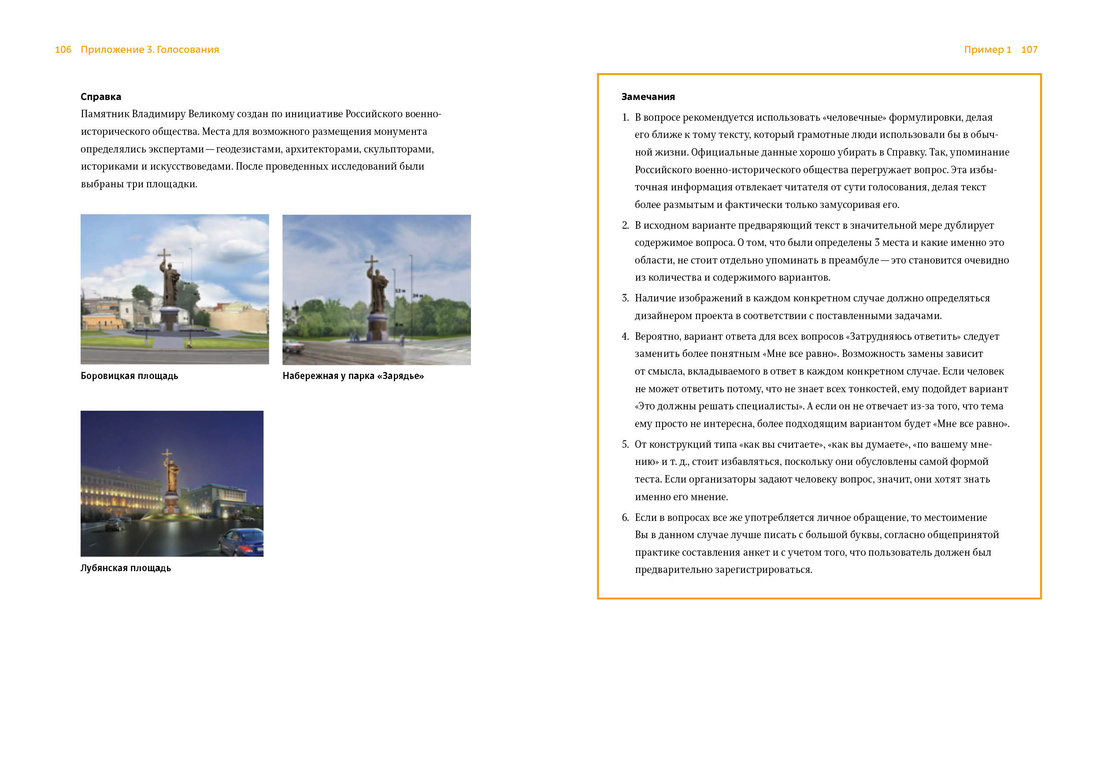
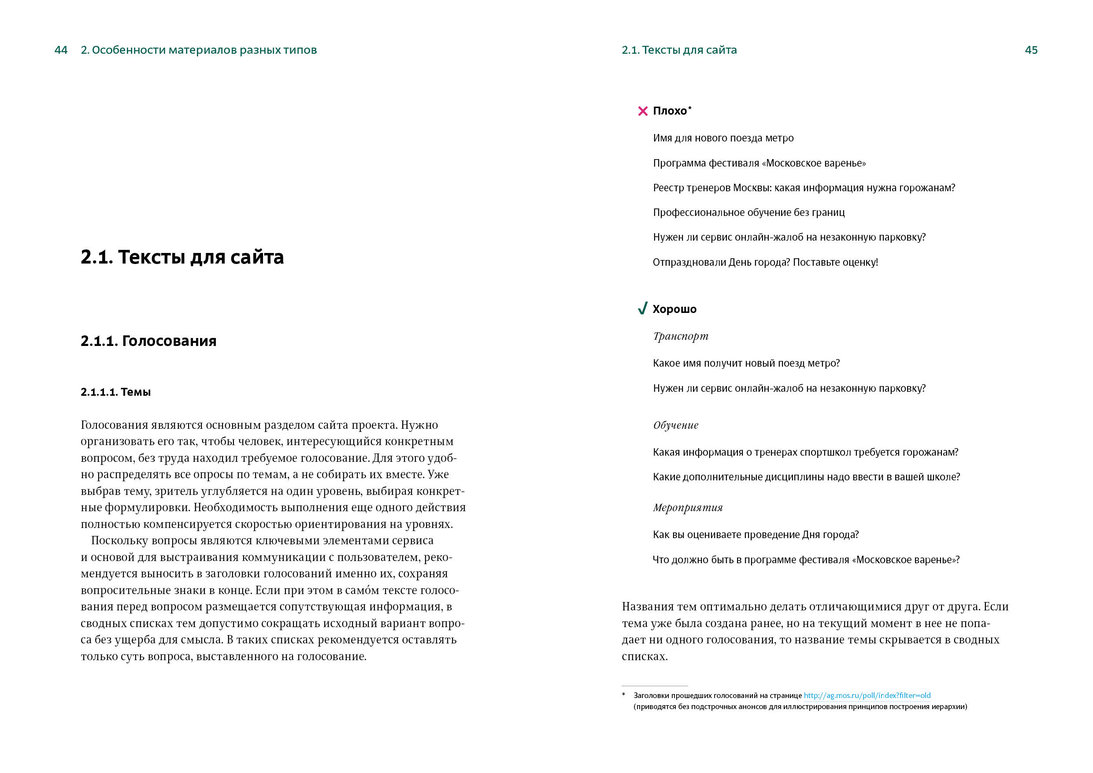
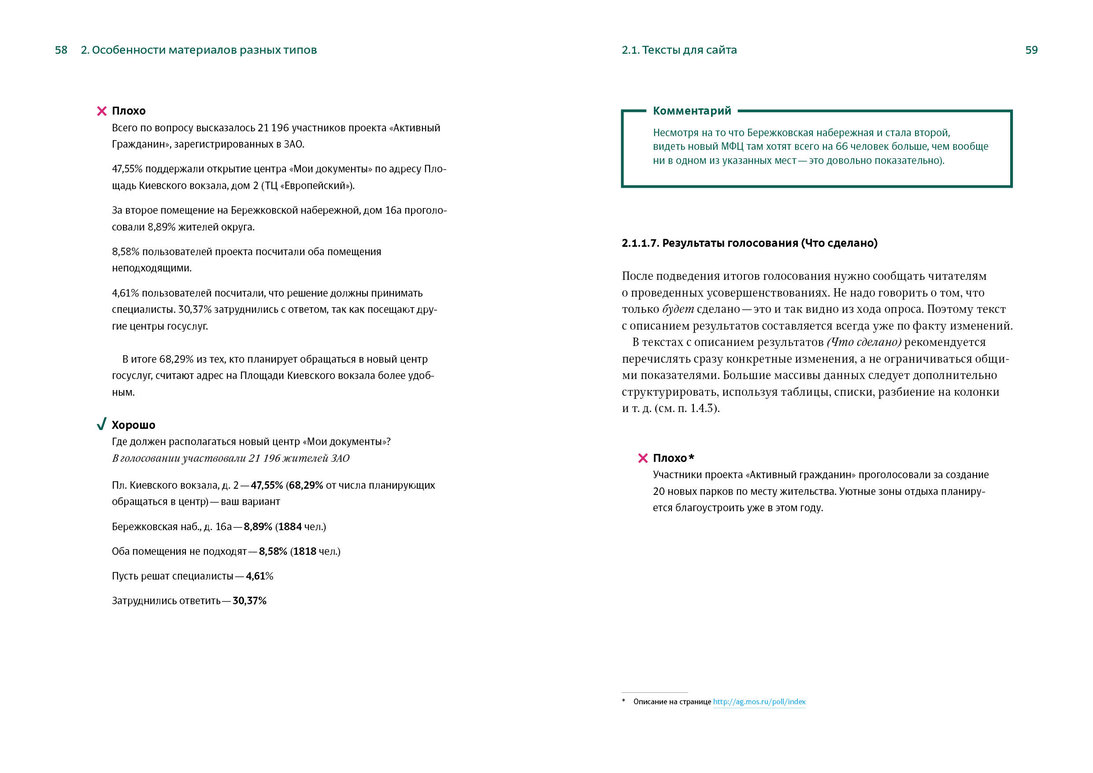
Making final changes to the layout and preparing the announcement.